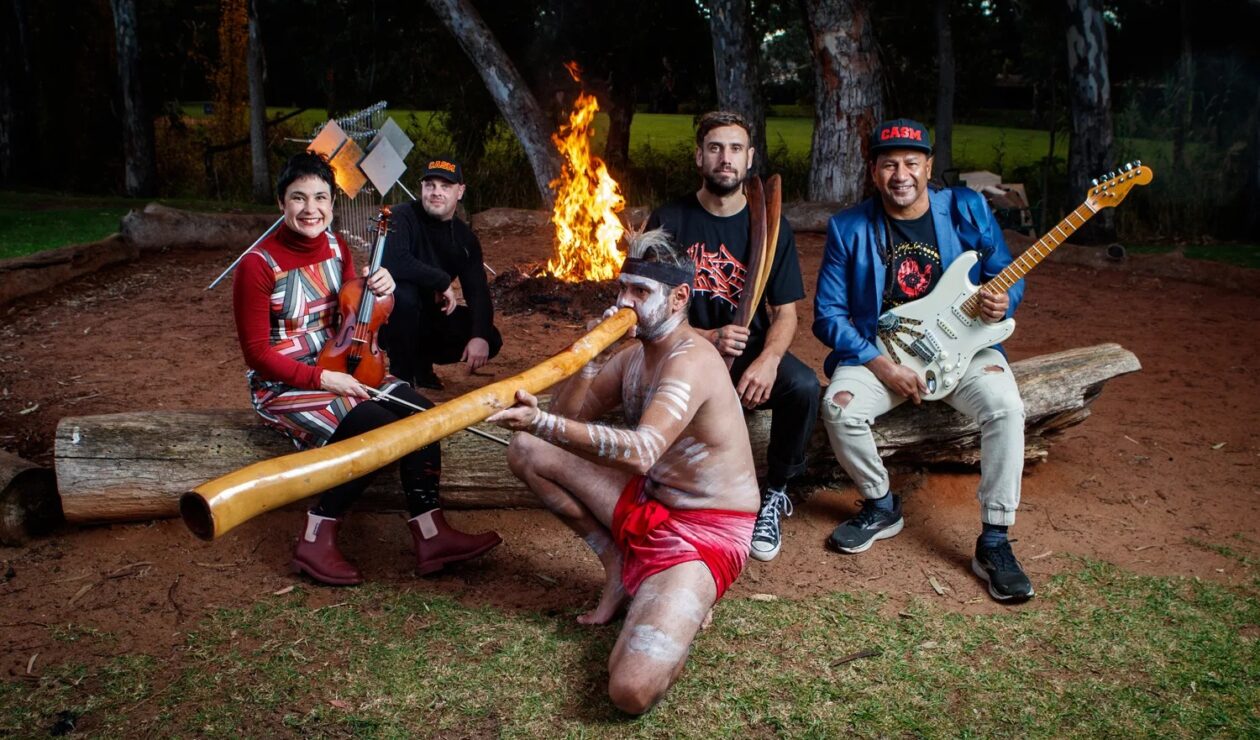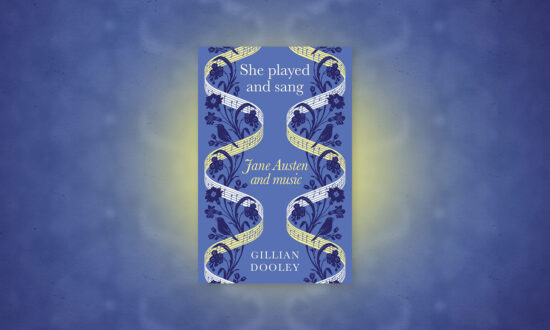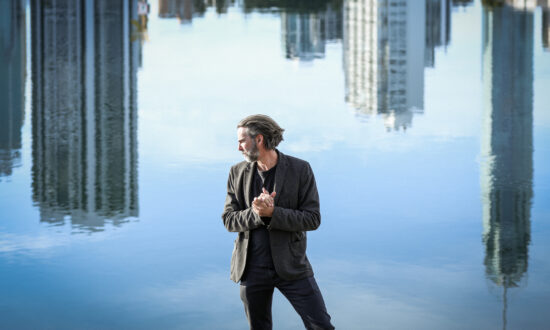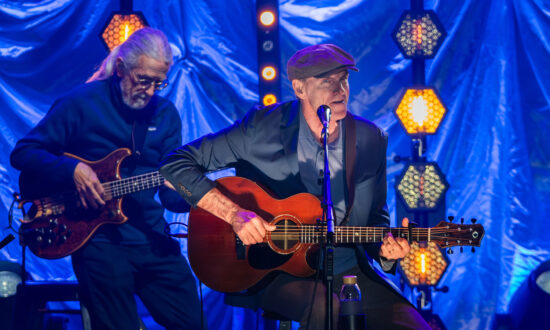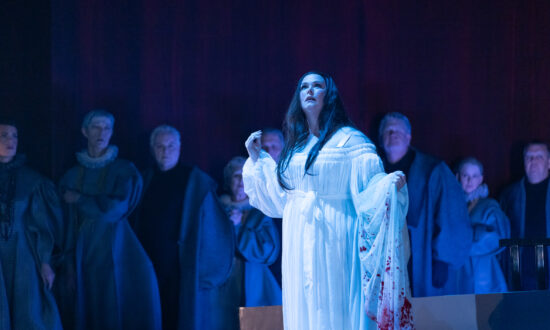Creation has been a work-in-progress for the past two years for Grayson Rotumah, developed from an initial 15-minute commission in 2021 for the ASO’s artist-led community-building project Floods of Fire.
The show will present stories that document Bundjalung culture and the arrival of colonialisation, or the “white sails”, reflecting what Rotumah describes as “mission songs, massacre songs, spiritual songs and dance songs”.
He says it is deeply rooted in the story of the Three Brothers, the creation story of Bundjalung land, which stretches from Northern New South Wales to South-East Queensland. It follows three brothers, their wives and their mother coming from the ocean and arriving on the land during a storm.
“I wanted to make it sound like this is a true representation of that story from my perspective, through my cultural lens,” he says. “When Creation is performed, I will definitely feel like this is about me.”
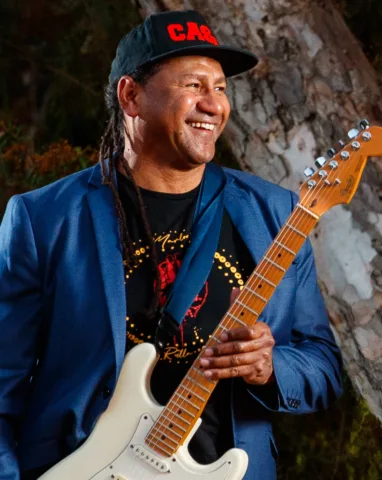
Grayson Rotumah. Photo: Matt Turner
The performance, to be conducted by Luke Dollman and described by the ASO as a ‘spiritual sound picture of Bundjalung history’, has been designed as a concerto grosso. Rotumah will tell his stories while seated around a symbolic campfire alongside Indigenous musicians Dylan Crismani, Robert Taylor, Rulla Kelly-Mansell and Corey Theatre, with the group yarning, performing and singing with the support of the ASO.
“The power of the fire at the front really resonates with my community and most Aboriginal communities in Australia, because it’s the lifeforce,” Rotumah explains.
“It’s where knowledge is shared. It’s where knowledge is passed on from generation to generation.
“Having these stories around that fire will symbolise the empowerment of Indigenous culture in Australia.”
Creation will become a part of the rich and ever-evolving history of Australian First Nations music as it creates something unique and evocative through the meeting of two different musical traditions.
The work will combine the traditional Kaurna yidaki, or didgeridoo, with contemporary textures of spoken word, rap, guitar and musician and composer Dylan Crismani’s microtonal “electric cristal” instrument to produce what Rotumah says is “a spiritually haunting, beautiful but eerie vibe”.
Crismani, a classical composition lecturer at the Elder Conservatorium of Music, developed the electric cristal based on the cristal baschet developed in 1952 by French brothers Bernard and François Baschet. Much like running one’s finger around the top of a crystal wine glass produces a ringing sound, the cristal baschet features a series of glass rods played with wet fingers. Normally, large resonator cones attached to the instrument amplify the sound. However, Crismani’s version uses contact microphones to broadcast its sound. It creates an ethereal peal as the player moves their fingers up and down the glass rods.
“It’s a blend of many different cultures,” Rotumah says of Creation.
“It’s a collection of all these instruments that are from places all over the world. I think with all the sophistication of those instruments, it will actually highlight the nuances of our story.”
This is not Rotumah’s first attempt to cross Western European and Indigenous Australian musical traditions, and he says the use of the “lived experience” of Indigenous peoples is a key element of bringing authenticity to his work.

Get InReview in your inbox – free each Saturday. Local arts and culture – covered.
Thanks for signing up to the InReview newsletter.
“What I’m doing with Creation is rejuvenating the Bundjalung language inside these songs,” he says of the inclusion of Yugambeh-Bundjalung language throughout the work.
“It’s an educational thing. It’s about cultural maintenance. It’s about language revival.
“It’s also to bring in the new generation of Aboriginal community to the foreground and put it back on the table and say, ‘Yep, Aboriginal languages are in danger’, and these songs are a vehicle just to keep them alive.”
The ASO will present Creation at its Grainger Studio on July 14.
Support local arts journalism
Your support will help us continue the important work of InReview in publishing free professional journalism that celebrates, interrogates and amplifies arts and culture in South Australia.
Donate Here
